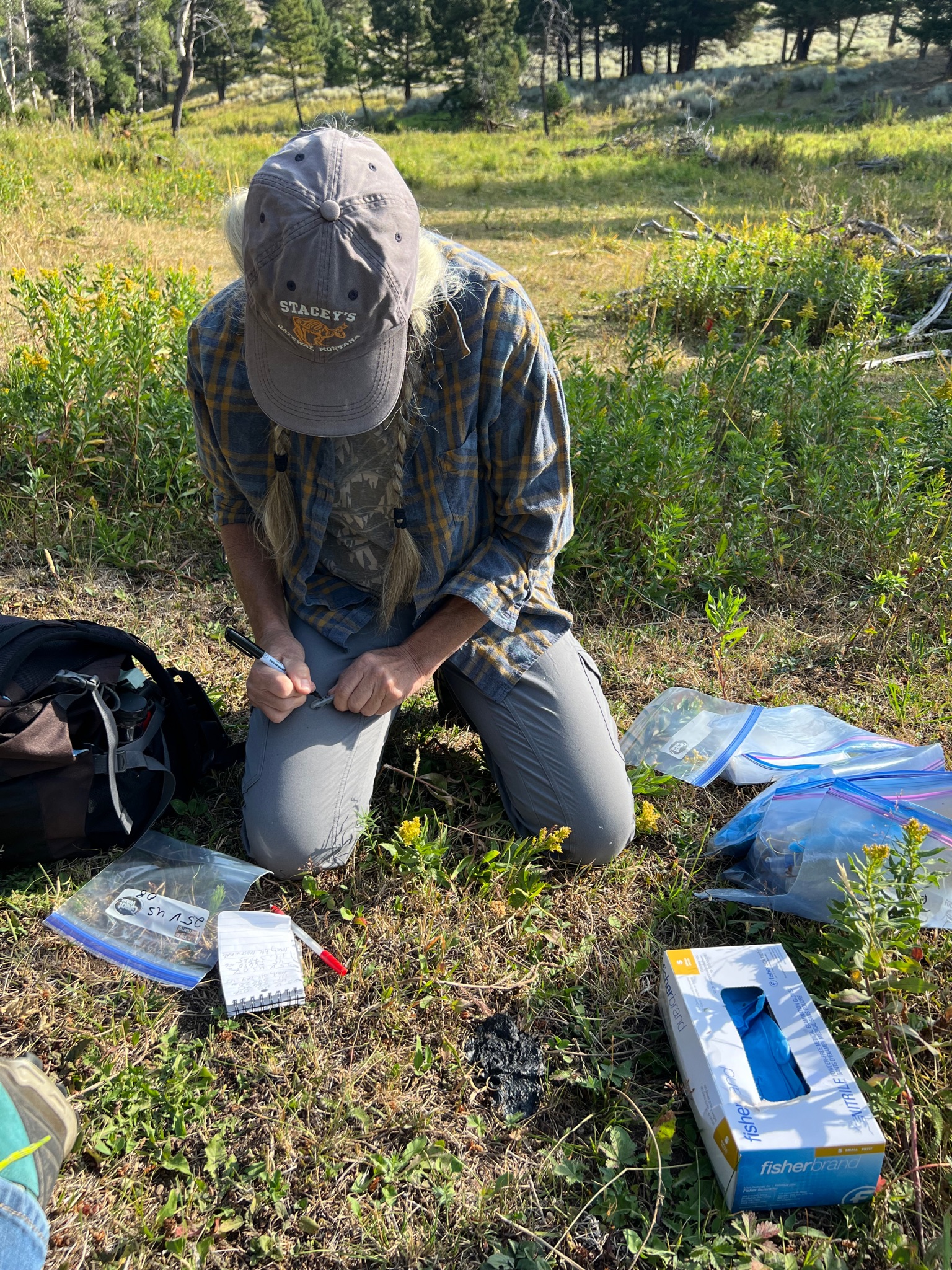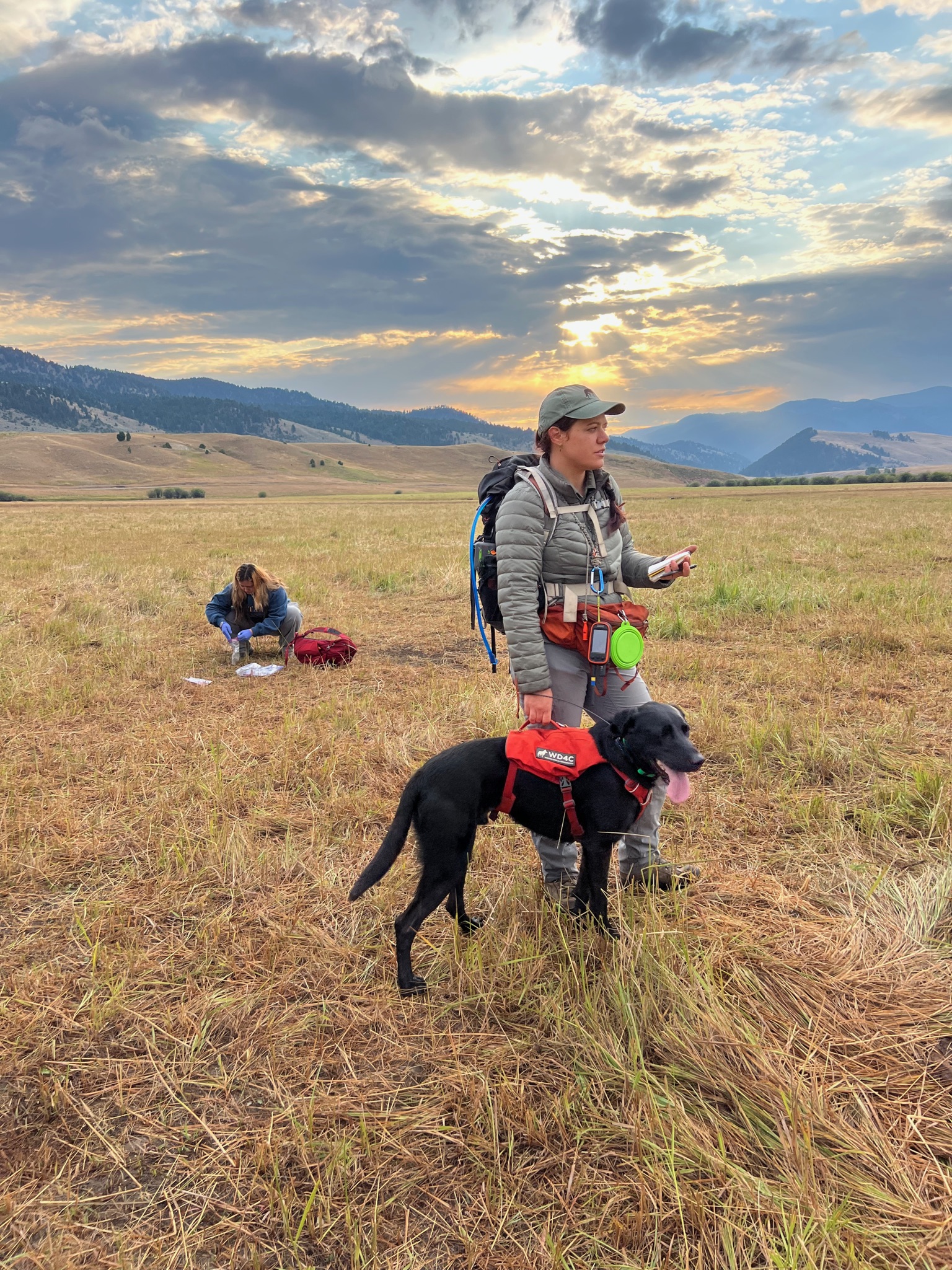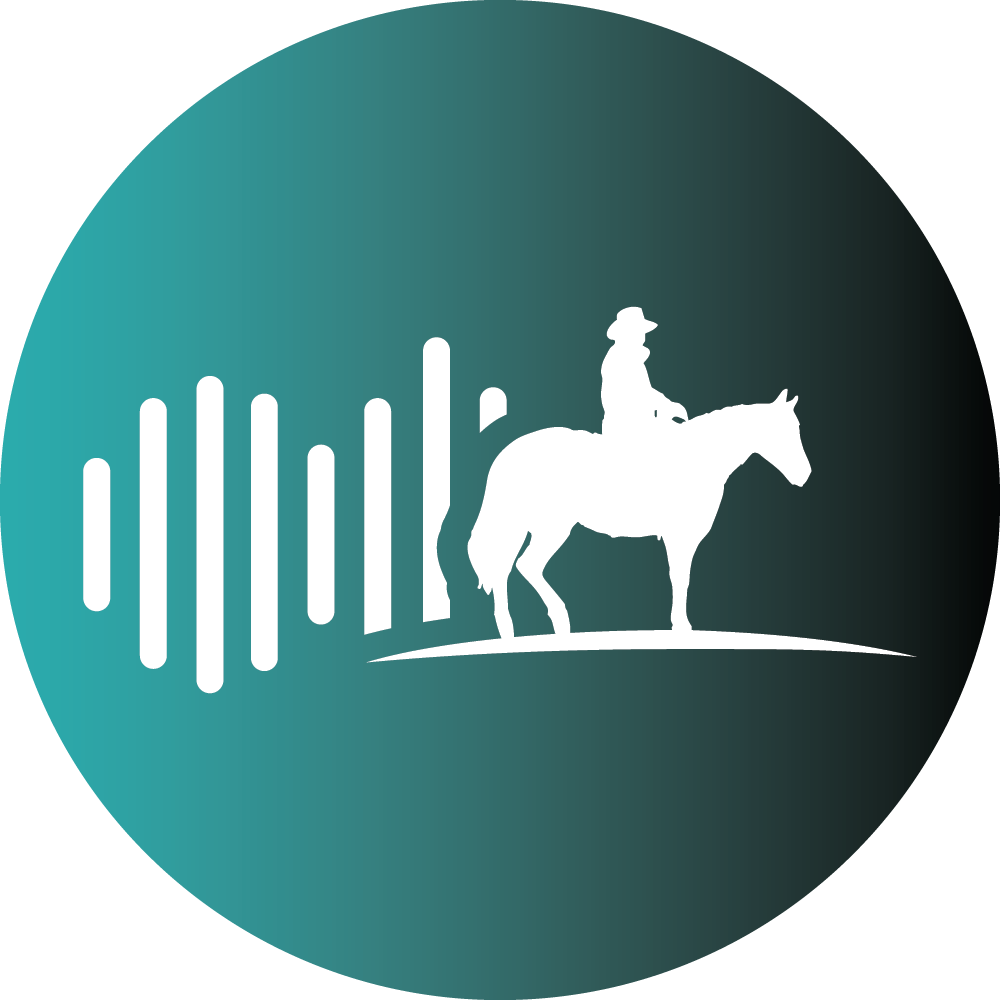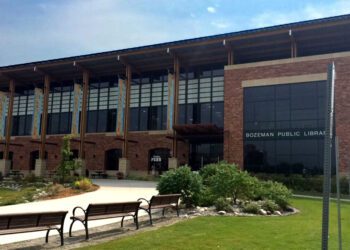Bozeman nonprofit Working Dogs for Conservation puts canines to work in the GYE, across the world
By Mira Brody VP MEDIA

This week, Alice Whitelaw is training dogs to detect mycoplasma bovis, the bacterium that causes pneumonia in bison. One of the four initial founders of the Bozeman-based, globally reaching nonprofit Working Dogs for Conservation, Whitelaw and her team have been using rescue canines for scientific target training. The targets are anything from invasive plant species and mussel identification to disease detection in animals such as bison and bighorn sheep.
Using working dogs for these tasks is less invasive to the ecosystem, less stressful for the wild animal involved, more efficient, and in many cases, more accurate.
“Just like dogs can detect cancer and other diseases, we’re training them to identify these diseases,” Whitelaw said.
To train, she explained, they use a device called an olfactometer, an odor diffuser, hooked up to a computer. Scents are diffused through a series of boxes, randomly chosen by the computer—a plain piece of cotton, a rubber glove, or the actual mycoplasma sample—and the dogs check each box until they identify the correct target and are rewarded.
“It’s quicker,” Whitelaw said simply. “If the dogs can do it successfully, it’s quicker than waiting for lab results to come back. So instead of sheep or bison being held for days, even a week or more, the dogs go, “yes, no, yes.”
And the statistics back it up: with 100% accuracy, 1,298 out of 1,298 kit fox scat was correctly identified; they are nine times more likely than cameras to detect one bear or bobcat; 16 times more area was searched when identifying black footed ferrets at a 97% detection rate; and they are five times faster at finding brown tree snakes.
Whitelaw is a wildlife biologist and worked for several state and federal agencies throughout her career, mostly involved with the reintroduction of endangered species. With her biology background, and her founding partners—Deborah Woollett, Aimee Hurt and Megan Parker, who has since departed—Working Dogs for Conservation began 25 years ago, growing globally and becoming a nonprofit in 2009.
Whitelaw and her partners noticed a demand for retrieving DNA from fecal samples in the biology world, coupled with a desire for a less invasive detection process—to avoid the need to capture an animal in order to collect vital data from it.
“What if we could get the same information by collecting scat and sending it off for DNA, non-invasively finding information,” Whitelaw said. “It turned out it works really well. We’ve been doing it for 25 years now, and we work all over the world.”
Working Dogs for Conservation has paws on the ground in 45 states and 36 countries. They’re just finishing project in Indonesia on the wild Sumatran Rhino population, the most endangered rhino in the world, with great success.
“I always tell the story of how as a wolf biologist, I thought I was really good at finding wolf scat,” Whitelaw said. “And then I trained a dog to find wolf scat, and I was like, ‘Oh my God, I had no idea they were pooping over there.’ It just kind of blew my mind. That’s kind of a running theme with all the work that we’ve done. Their abilities are almost limitless in terms of what things they can smell and what they can find for you.”
Detecting rhino horn poaching in South Africa. Finding geometric tortoises in South Africa. Detecting invasive island rats. Sniffing out invasive plants in Grand Teton National Park. These working dogs can do it all, and a lot of the work they do across the world is fostered right here in the Greater Yellowstone Ecosystem, with black bears, grizzly bears, mount lions, wolves and invasive weeds like spotted knapweed.
To find the right dog for the job, Whitelaw explained there’s a refined criteria. If they’re in need of new recruits, they’ll connect with local shelters and other working dog groups to seek out another canine staff member. Many are former working dogs, such as search and rescue or police dogs in need of a career change, or rescue dogs that are imperfect for, say, a family home. All are hardworking and reward driven.
“It’s getting dogs that need another chance,” Whitelaw said. “They need another outlet for all that energy they’ve got and that intensity, and that’s exactly what we’re looking for.”
While each dog has a primary handler, teams can vary depending on the bond between the human and dog, and the assignment at hand. Dogs can be trained on at least six, sometimes up to 13 different targets.
“The record holder is Wicked, who was a rescue dog from Anaconda,” Whitelaw said. “She knew 32 different targets and she traveled all over the world. She worked in China. She just went everywhere.”
Although at one point she had three at one time, Whitelaw currently has one detection dog, 12-year-old Rue. If they receive funding for a project in California, the pair will head out next month to work on Rue’s favorite target: endangered San Joaquin kit fox scat. Then, Rue will officially retire from field work.
Working Dogs for Conservation receives funding primarily from grants, service fees and individual donors. Their primary clientele is the federal and state government, and sometimes universities and other nonprofits.
In the years since Working Dogs for Conservation was founded, Whitelaw is constantly surprised by just how much dogs can do for conservation and the impact they’ve had on not only the work biologists do, but the environment, worldwide. When the organization started, there were only three other groups doing similar work. The industry has since grown into a global effort.
“I had no idea that it would expand into invasive plants and protecting islands and protecting species from poaching,” Whitelaw said. “That wasn’t in my wildest dreams. So when I look back, it’s like, ‘Wow, we’ve done a lot.’ … and it just continues to grow.”


















